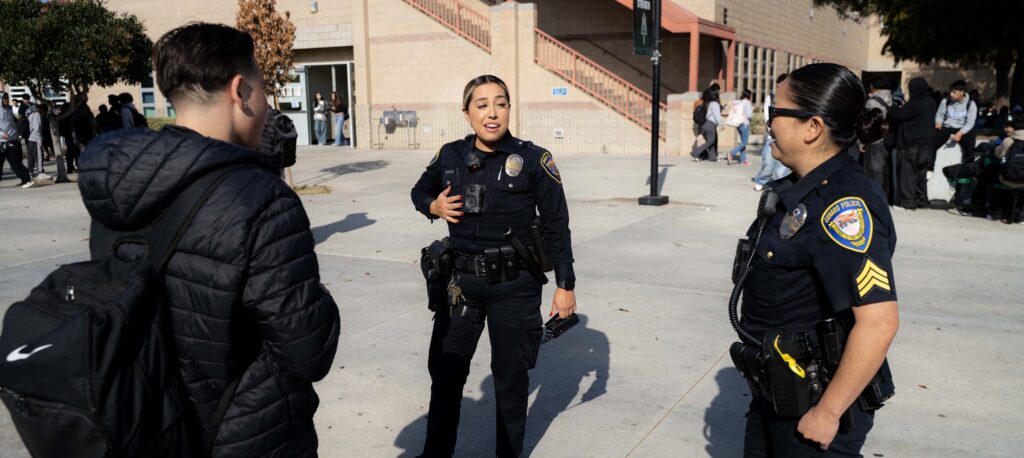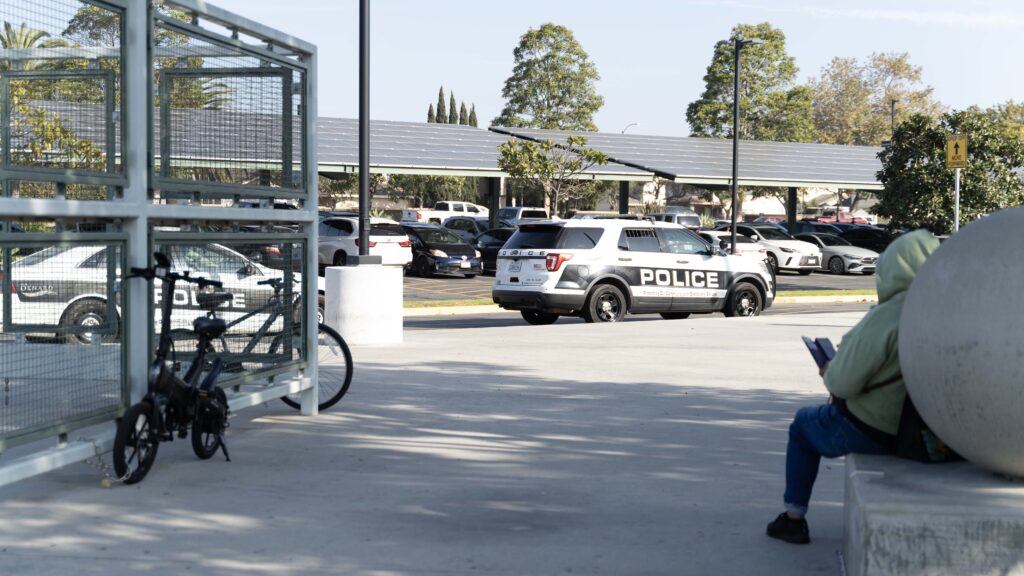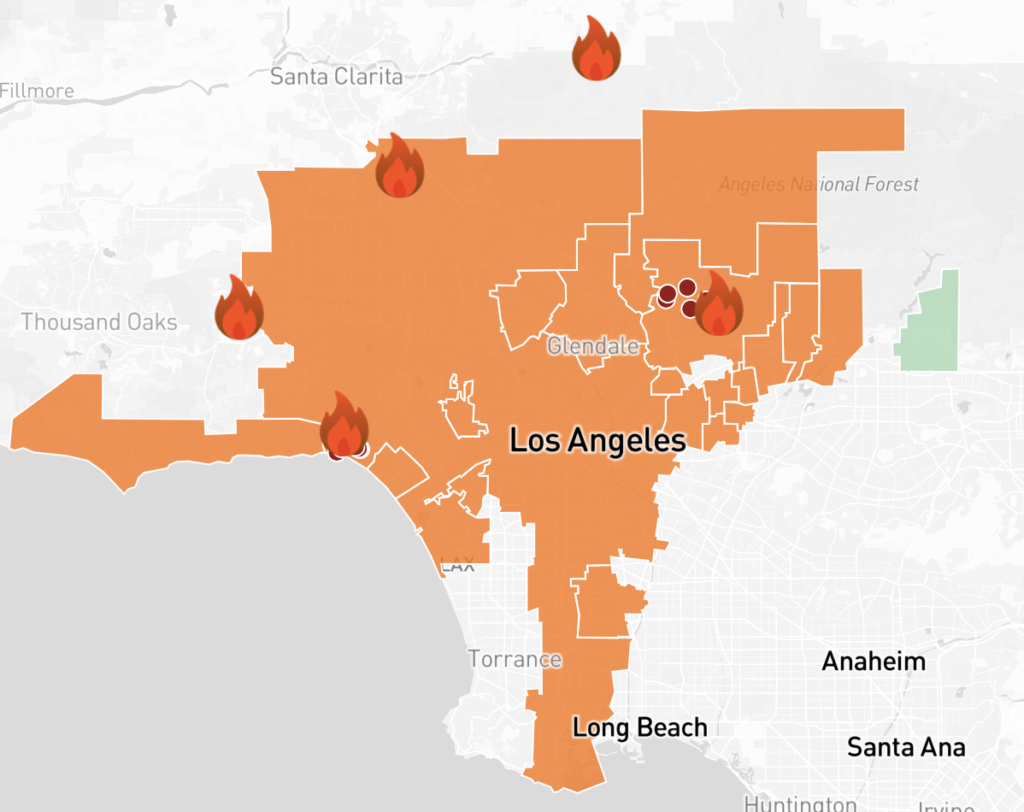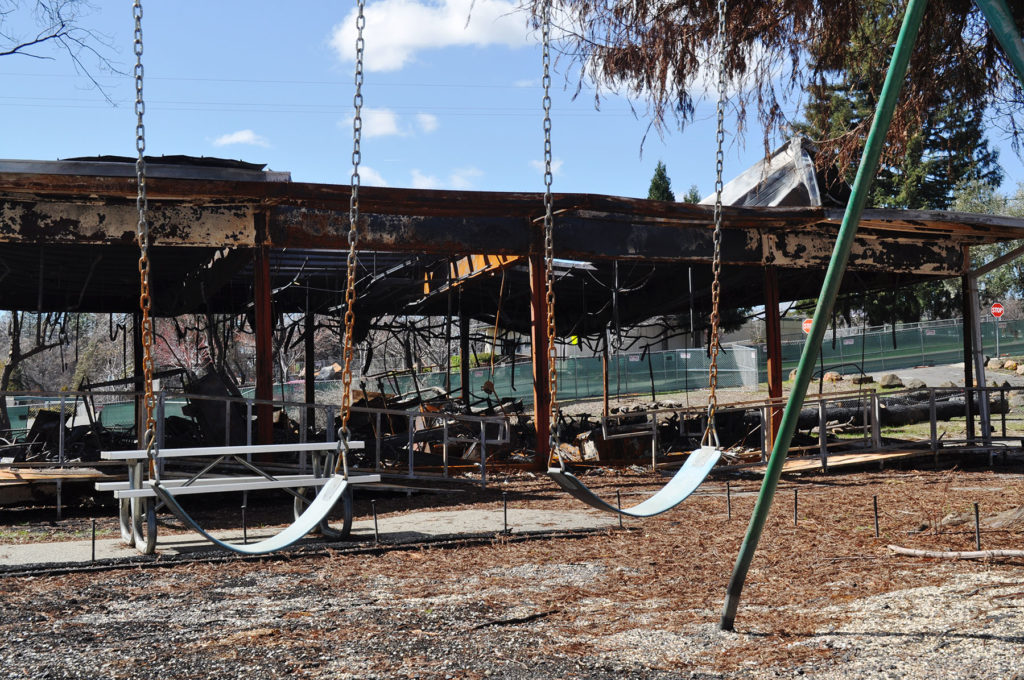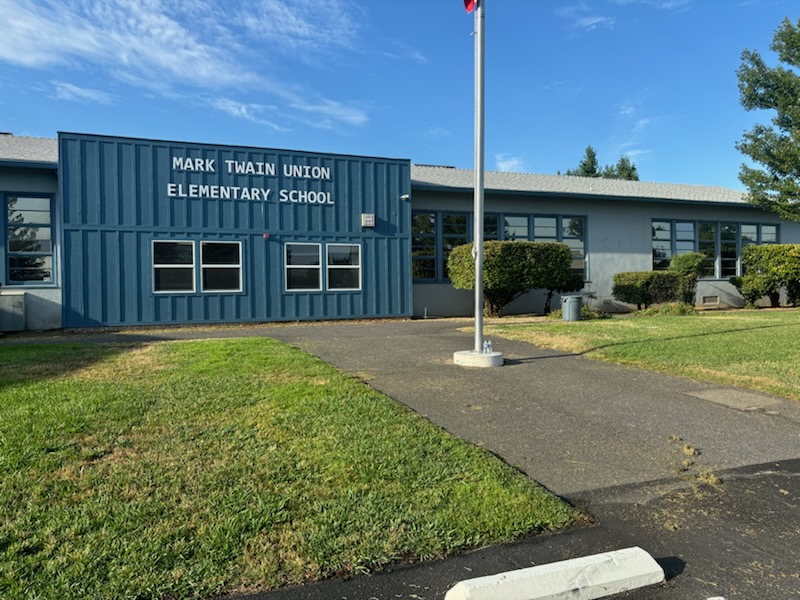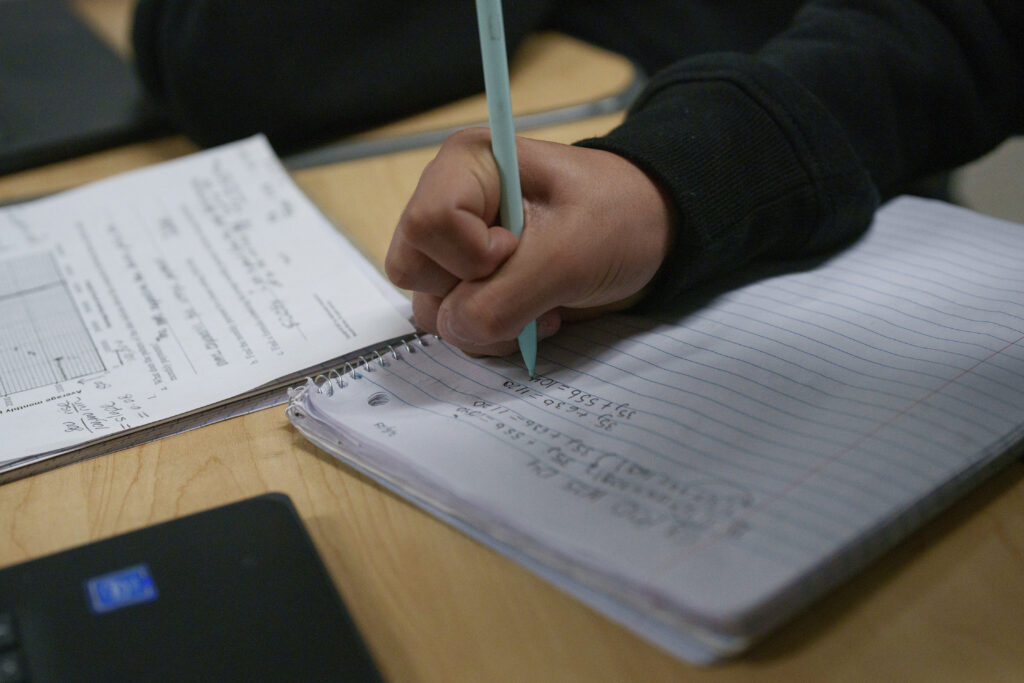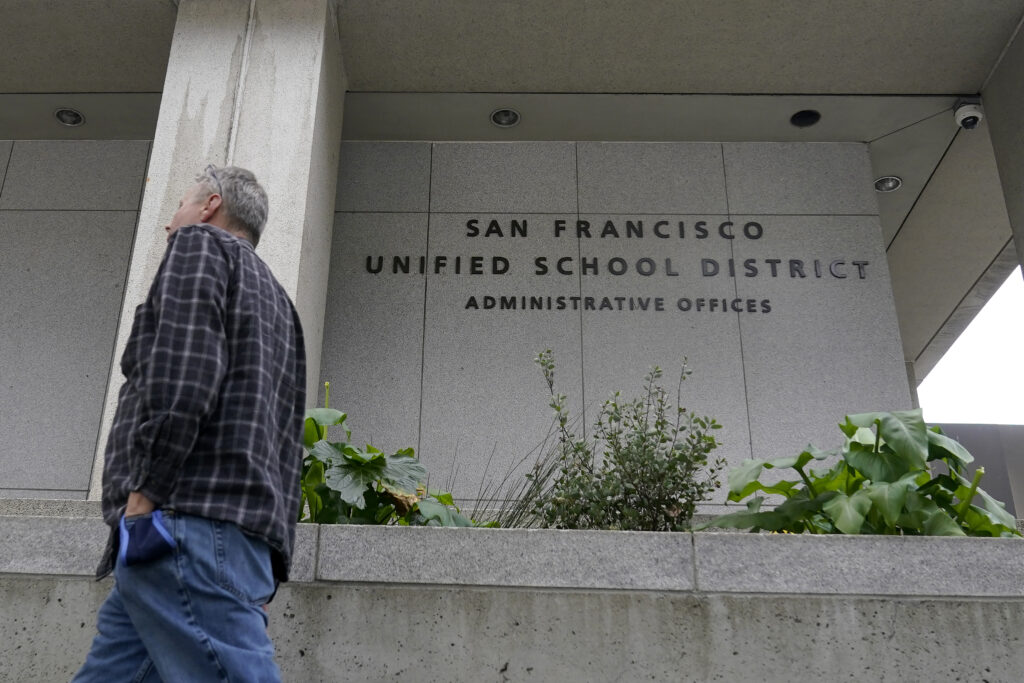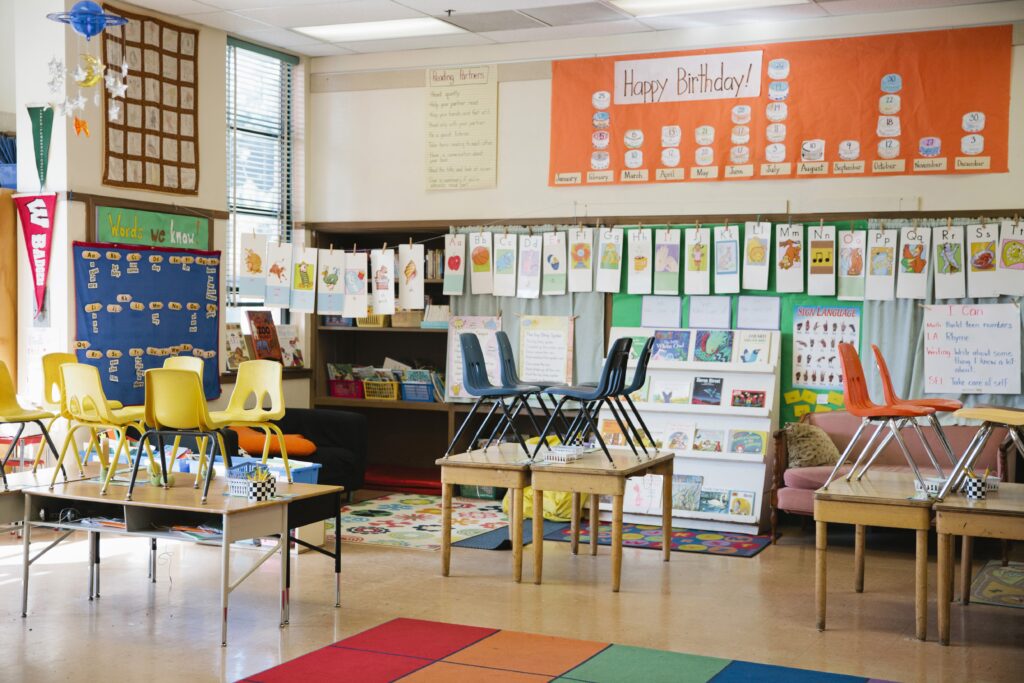Policing experts say that discipline is the responsibility of school administrators, not law enforcement.
Many California school districts’ contracts for policing services do not prohibit officers from involvement in routine student disciplinary matters, despite the federal government’s guidance that administrators are responsible for handling those issues, an EdSource investigation found.
EdSource obtained 118 contracts between 89 districts across the state and the cities and counties that provide them with school resources officers from local police, sheriff’s and probation departments. More than half either allow police to enforce school rules and code of conduct violations, such as using profanity or wearing inappropriate clothing, or don’t address disciplinary issues.
The U.S. Department of Justice advises that agreements for what are generally called school resource officers “clearly indicate” that officers will not be responsible for requests to resolve routine discipline problems involving students. That guidance aims to “prevent unnecessary law enforcement involvement in noncriminal student misbehavior.” (A spokesperson for the department’s Office of Community Oriented Policing Services did not respond to multiple requests to elaborate on the department’s recommendations.)
Jyoti Nanda, a professor at Southwestern Law School in Los Angeles, said that officers lack the training necessary to respond to behavioral issues that can result in student discipline.
“Well-trained educators can handle all of the disciplinary issues,” Nanda said. “When police enforce school rules as opposed to criminal law, they are overreaching their footprint” in ways that are “deeply damaging to children.”
Many policing contracts also put resource officers in vaguely defined roles.
They are to act as “informal counselors,” “mentors,” “role models” and exemplars of “good citizenship.” Some contracts are meant to “promote a positive image of law enforcement.” One agreement refers to them as “youth development officers.” Another says their duties include serving as “a visual deterrent to aberrant behavior.”
Some give police authority to enforce school rules and code-of-conduct violations, such as using profanity or public displays of affection, that could result in a student being disciplined.
Some contracts say that officers will teach classes, without specifying the courses or training requirements.
The Anderson Union High School District’s contract with the Shasta County Probation Department requires resource officers to “provide class instruction as identified by the district and approved by the county.” Superintendent Brian Parker did not respond to questions about that requirement.
The varying roles officers play can result in legal risks to students, according to University of North Carolina law professor Barbara Fedders, who has argued for removing school resource officers.
“Relationship forming and being nice and all of that is misleading. Because if you then need to question the kids, you’re going to be able to take advantage of that relationship and use it for law enforcement purposes,” Fedders said in an interview.
‘Situations that arise from student conduct’
Some contracts don’t differentiate between officers’ roles in investigating school rule violations and potential crimes.
The Fullerton Joint Union High School District, which straddles Los Angeles and Orange counties, has policing contracts totaling more than $800,000 with the cities of Fullerton, La Habra and Buena Park. Each requires resource officers to “investigate situations that arise from student conduct at school.” The agreements also authorize officers to search students if they believe, or have reasonable suspicion, that something illegal occurred, or are “directed to do so by a school administrator.”

Legal experts were critical of those terms.
The language in the contract “sends the wrong message not only to officers but to students and parents and teachers because it’s so vague,” said retired Superior Court Judge LaDoris Cordell, who also served as San Jose’s independent police auditor from 2015 to 2020.
“It’s pretty much at the discretion of an administrator, or even the officer, to just decide if there’s something suspicious, or they think may be illegal,” Cordell said. “We’re not talking here about probable cause. Who’s the reasonable person? The officer? The administrator? Who knows?”
District Superintendent Steven McLaughlin, Assistant Superintendent Ruben Hernandez, school board President Vickie Calhoun, and Dr. Chester Jeng, who was board president when the contracts were ratified on a consent agenda vote, did not respond to multiple requests for comment. The city managers of Fullerton, La Habra, and Buena Park also did not reply to messages seeking comment.
Khadijah Silver, a supervising civil rights attorney for the Washington, D.C.-based Lawyers For Good Government, also criticized Fullerton’s contract language.
“It’s basically saying, anytime a kid acts up, you’re free to go violate their civil rights and interrogate them off of the school’s premises and all of that,” Silver said. “It’s unconstitutionally overbroad language that fails to define or delineate any bounds of appropriate police behavior whatsoever.”
‘What any reasonable adult would do’
Some legal experts say that by allowing officers to enforce school rules, districts create situations that are confusing and intimidating to students. Nanda said that officers’ involvement in discipline is often “ambiguous.” Students, she added, may not understand why an officer stops them in the hallway: Is it for an alleged crime or a violation of school rules?
“Are they just walking the child over to the principal’s office, or are they interviewing the child and taking police notes? How does that play out?” she said. The presence of resource officers can result in harsher discipline for students, “particularly for Black students, male students and students with disabilities,” according to a 2023 study by researchers at State University of New York, Albany, “even though officers are typically not trained to, and often do not intend to, become involved in minor disciplinary matters in the school.”
Although the Alabama-based National Association of School Resource Officers recommends that districts prohibit officers from “becoming involved in formal school discipline situations,” its executive director, Mo Canady, said in an interview that he thinks officers should get involved in situations that could result in discipline.
When officers see a young person misbehaving and get involved, they’re doing “what any reasonable adult would do,” Canady said. “Adults should never walk by and ignore a situation like that. I don’t care if we’re at a shopping mall, whatever it is.”
Asked whether there is a difference between an adult and an armed police officer intervening when a juvenile misbehaves, Canady said: “That’s why one of the issues that we harp on constantly is the importance of good relationships that (officers) build with students.”
California’s Department of Education does not provide guidance on the use of school resource officers, Elizabeth Sanders, an agency spokesperson, said.
The California School Boards Association provides districts with what it calls a “sample policy” on policing contracts, which recommends that the duties of resource officers should “not include the handling of student code of conduct violations or routine disciplinary matters that should be addressed by school administrators or conduct that would be better addressed by mental health professionals.”
Troy Flint, spokesperson for the association, said district leaders are free to “interpret the sample policy in a way that captures their community’s desired approach to law enforcement on campus. We recognize there’s a diversity of opinion throughout the state about the role security personnel should play on campus or whether they should be there at all.”
‘Why are we policing our students?’
The Oxnard Union High School District has contracts with two law enforcement agencies that clearly prohibit resource officers’ involvement in disciplinary matters.
The district’s $2.33 million contract with the city of Oxnard states that police are to distinguish “between disciplinary misconduct to be handled by school officials from criminal offenses.” The contract also says that officers “are responsible for criminal public order offenses” and “should not get involved in school discipline issues.” A separate contract with the city of Camarillo contains similar language. Both contracts require officers to establish “clear probable cause” before searching a student.

But the district’s contract with Ventura County for one resource officer does not address discipline. Superintendent Tom McCoy said in an interview that it is “well understood and discussed in meetings” that resource officers provided by the county do not enforce discipline. It’s never been an issue. They are very aware of our policies.”
The district has a policy that is not in its policing contracts and that allows students to request “a person of the same gender or gender identity or a staff member familiar to them to be present” if they are questioned by law enforcement.
McCoy added that the district requires students who “are questioned or interviewed by police on campus also must be referred for counseling and wellness services on the same day to address any specific needs identified through the interview process.”
Karen Sher, the school board member whom McCoy credited with helping create the district’s policy, said her experience teaching at a school with resource officers led her to ask herself, “‘Why are we policing our children?’”

Sher said she believes that officers have a role to play in school safety, but she also worries about how their presence might affect disadvantaged students. About 16% of district students lack stable housing, she said.
“How on earth does anyone believe those students have not had an interaction, both positive or negative, with police?” Sher asked. “We expect them to come to school, see police cars in front of their school, and expect them to feel good about that? That’s a very entitled perspective.”
Eric Wiatt, a Ventura County sheriff’s deputy who has worked at Adolfo Camarillo High School for the past three years, said adjusting to being a resource officer took time.
“The first year was a learning experience of communicating with (students) and developing a rapport. It wasn’t natural in me. You know, all the different social media platforms that are used and the different slang they use,” Wiatt said in an interview.
He says he spends a lot of time investigating bullying and threats made on social media.

“We actually dig into them. We take every threat very seriously. We do a full investigation,” Wiatt said.
When he’s not investigating threats, Wiatt walks the campus wearing a bulletproof vest over his uniform and a pistol holstered to his hip. He often eats lunch with students.
Riley Young, a 16-year-old junior whom school officials selected to be interviewed by EdSource, described Wiatt as calm and helpful.
“I’d been getting in trouble,” she said. “He helped me realize that being good in school and in life was important.”
‘Providing clarity’
District leaders provided a range of reasons why their policing contracts don’t address whether resource officers can be involved in disciplinary matters.
The Madera Unified School District’s contract with the city of Madera for resource officers doesn’t address disciplinary issues. Superintendent Todd Lile said the idea that officers would enforce discipline “has never been present and, as a result, has never been explicitly called out in contractual language.” Police are “not thought of or expected to keep control of a campus,” he said.
The Lucia Mar Unified School District has two contracts for resource officers. Its agreement with the city of Arroyo Grande prohibits officers from enforcing discipline. But its contract with San Luis Obispo County does not address disciplinary matters.
Amy Jacobs, a district spokesperson, said Lucia Mar has a policy prohibiting law enforcement’s involvement in discipline, but Jacobs didn’t provide an answer when asked why that policy wasn’t written into the contract with the sheriff’s office.
The Galt Union High School District board in Sacramento County agreed to a three-year contract with the city of Galt for three resource officers in 2023. The agreement did not address police involvement in discipline. But shortly after Anna Trunnell became district superintendent in 2024, the contract was revised.
It now states that resource officers “will not be responsible for requests to resolve routine discipline problems involving students. They will not respond to incidents that do not pose any threat of safety or would not be considered crimes if they occurred outside of the school.”
Trunnell said the new language “assists in providing clarity when responding to student needs.”
The lack of clarity in many school policing contracts is “profoundly alarming,” said Nanda, the Southwestern law professor.
“It’s crucial,” she said, “for parents, educators and administrators to pay attention to the who, what and why of officers in our schools.”
